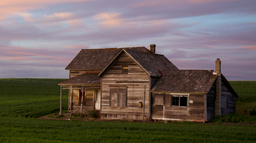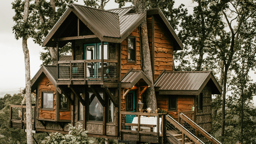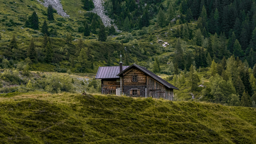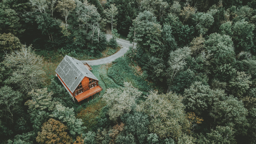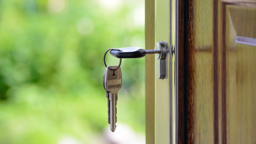
Cabin maintenance can be tricky, especially when you don’t live there year-round. If you use your cabin as a vacation getaway or a seasonal home, it may sit unoccupied for most of the year. Even though nobody is using it, your cabin still needs proper inspections and maintenance.
This guide will help you determine how often you should check in on your cabin throughout the year to ensure it stays in good condition.
The Short Answer
In short, there is no definitive answer to this question. You may have to do a weekly, monthly, quarterly or seasonal checkup based on your cabin’s unique condition. If the structure is in great shape, then you can get by with a quarterly or seasonal inspection. If the cabin is showing some wear and tear, a more frequent checkup may be more appropriate.
Additionally, you must check on your cabin more often than usual during times of inclement weather when the risk of property damage is higher. Other critical times when you should check in are before extended visits, toward the end of each season and before making any big renovations.
Year-Round Cabin Monitoring Recommendations
For now, let’s focus on some year-round cabin monitoring recommendations. Here are some basic things you can do to ensure your cabin’s safety and security when you’re away for extended periods of time.
Get a 24/7 Monitored Security System
If your cabin is going to sit unoccupied for weeks or months, then your first priority should be investing in a 24/7 monitored security system. Equip the property with cameras and alarms to detect the presence of trespassers. With an extra subscription fee, you can have trained professionals surveil your cabin 24/7 and send instant alerts to your mobile devices and law enforcement.
Alternatively, you could get a security system that you monitor yourself. People who own vacation rentals often choose this option so they can monitor communal areas and make sure guests are following the house rules. Either option would make an excellent addition to your cabin if you don’t stay there for long periods of time.
Make Use of Smart Home Technology
Smart home technology is a huge game changer for long-distance home monitoring. It can automatically supervise almost every appliance in your cabin, from the HVAC system to the various water and lighting fixtures. You can also remotely control the appliances through mobile applications and voice assistants so they stay in good condition.
One unique piece of smart technology is the video doorbell, which captures all kinds of activity outside the front door. You can see when mail arrives, check up on the weather outside and get incriminating evidence on trespassers. A video doorbell is the perfect companion for motion-activated floodlights because your front door will have a double layer of protection.
Secure Doors and Windows
If you only check on your cabin every few months, door and window security should be a higher priority. They’re the main entry points for intruders, and they are also the most vulnerable to the elements. Drafts and water leaks could wreak havoc on your cabin for weeks without anyone noticing.
Start by draft-proofing your doors and windows with weatherstripping and fill in any gaps with silicone caulk. You should also keep a close eye on each door’s exterior sealant. For security purposes, deadbolt locks and tinted window films are highly recommended. The deadbolts will keep humans and animals out, and tinted windows stop people from peeking inside.
Hide Your Valuables
One of the biggest mistakes people make when leaving vacation homes unoccupied is failing to hide their valuables. They leave everything in its usual place, making the property an attractive target for thieves. If you’re going to be away for a long time, lock them in a closet where thieves are less likely to search. Better yet, lock them in a safe or hide them in a secret drawer.
Every time you visit your cabin, try to change each item’s hiding place if possible. This security strategy is impractical for larger items like recreational vehicles and patio furniture, but it can work for smaller items like electronics and expensive decorations.
Keep in Touch with Neighbors
Unsurprisingly, most break-ins occur when the homeowner is gone and intruders don’t have any resistance. With this fact in mind, you need to keep in touch with neighbors when you’re away. They can tell you about any strange happenings on the property, take care of plants and do other small chores around the house.
Hire a Landscaping Service
If you’re worried about outdoor maintenance while your family is away, you should hire a landscaping service. The workers will keep your lawn and garden in good shape, and they will also keep up the appearance that somebody is home. There will be far too much human activity around the property for any trespassers to try their luck.
Register for Police Checks
The rise of vacation homes in the United States has caused local law enforcement agencies to offer free periodic police checks to homeowners who won’t regularly visit. An officer or deputy will drive to your cabin and inspect the property for suspicious activity while you’re away for extended periods. They will also notify you if something gets damaged and needs repairs.
Seasonal Cabin Monitoring Recommendations
Now, let’s talk about seasonal check-ins. Even if your cabin is in great shape, you still need to complete some key maintenance tasks every season. Here’s a quick rundown of what you should do when visiting during the winter, spring, summer and fall.
Winter
During the winter season, try to visit your cabin at least once a month at the minimum. Since weather conditions are harsher than usual, frequent check-ins become more important. For example, you will have to remove snow from the roof after every snowfall to prevent sagging, leaking and gutter damage.
Controlling your cabin’s indoor climate is the key task during the winter months. You’ve already read about weatherproofing the doors and windows, but you should also make small adjustments such as rotating the ceiling fans, frequently vacuuming and replacing the air filters. These tasks will require weekly or biweekly visits.
Spring
Spring is the time to air your cabin out. Open the windows and get a cross-breeze going to filter out the pollutants that built up during the winter. Do your typical spring cleaning, declutter the place if necessary and bring out new decorations. You can do this job over one weekend, but the other springtime tasks take more time.
Most of your focus should be outdoors during the springtime. You need to bring your lawn and garden back to life and check if the groundwater is draining properly now that the ground is unfrozen. Proper drainage is important for the cabin’s concrete foundation as well as the local plant life. These chores may require multiple visits throughout the season.
Summer
Summer is the most challenging season for cabin maintenance, so you should try to visit weekly or biweekly. For starters, you must mow the lawn, prune the bushes and do other landscaping tasks on a regular basis. You must also keep a close watch for pest infestations, as bugs and birds love to make wooden cabins their home.
You may also have to spend a few weekends restaining the hardwood exterior. Experts recommend adding a new layer of staining solution once every five years or sooner, depending on weather conditions. Protecting the wood from thunderstorms and the sun’s strong ultraviolet rays is an ongoing chore that you can’t ignore for the whole season.
Fall
Fall is the best season to leave your cabin unoccupied for long periods of time. The temperature isn’t too hot or cold, and precipitation decreases, which means weather-related damage is unlikely. Your only pressing responsibility is to prepare the structure for the winter months, which may require an extensive fall cleaning checklist.
The key fall items you should address are your gutters and indoor appliances. The gutters will take a beating during the winter, so you need to clean them out before the first snowfall. You must also inspect the HVAC system and the kitchen and bathroom appliances before leaving the house. These tasks can take just one or two visits if you don’t have to make extensive repairs.
Keep Your Cabin Supervised at All Times
Even though you won’t be present for most of the year, you should keep your cabin supervised at all times. A reliable security system and trustworthy neighbors will make your job much easier. You must also pay the cabin a visit for seasonal maintenance, which varies depending on the weather and the cabin’s condition.




